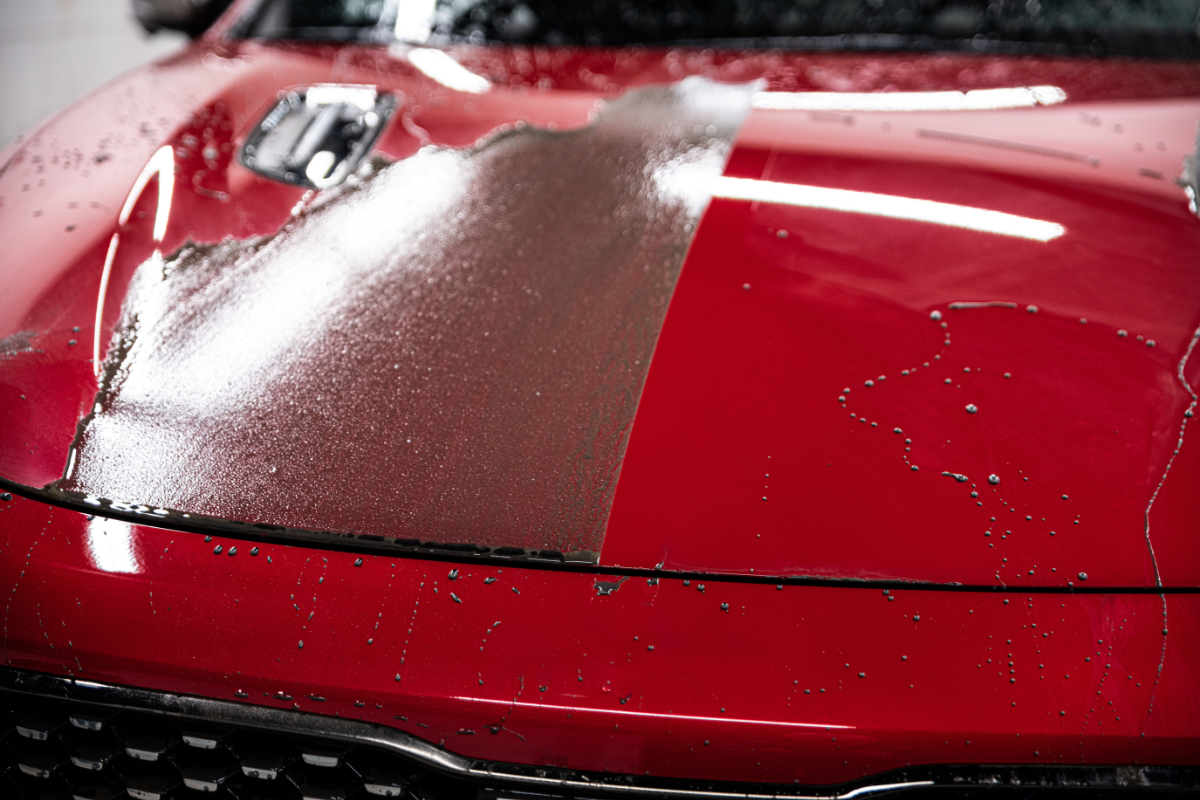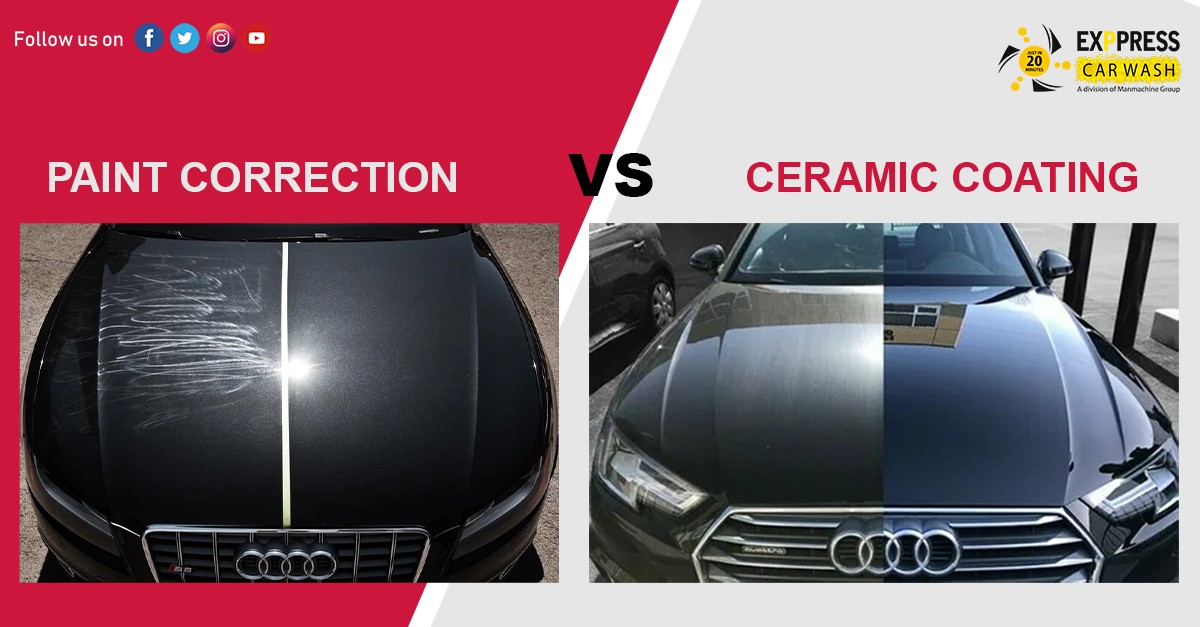Ceramic Coating: The Ultimate Remedy for Preserving Your Vehicle's Luster
Ceramic Coating: The Ultimate Remedy for Preserving Your Vehicle's Luster
Blog Article
Checking Out the Scientific Research Behind Ceramic Finish and Its Influence On Automobile Explaining
The application of ceramic coating in cars and truck describing represents a significant development in automobile care, rooted in its innovative chemical buildings, mostly silica dioxide and titanium dioxide. Recognizing the science behind these products reveals not just the protective advantages they supply yet likewise their duty in enhancing a car's visual durability. As we explore the details of the application process and the long-term effects for car upkeep, it comes to be clear that the selection of ceramic layer can essentially modify one's technique to auto care. What considerations should be made prior to devoting to this transformative solution?
What Is Ceramic Finish?
Ceramic finish is a modern remedy that has gained appeal in the automotive describing sector for its capability to give resilient protection for automobile surface areas. This sophisticated safety layer is usually made up of silica dioxide (SiO2), which develops a solid bond with the car's paint, developing a resilient guard versus environmental impurities. Unlike traditional wax or sealants, ceramic layers provide premium resistance to UV rays, chemical stains, and physical abrasions.
The application of ceramic finish involves a careful procedure, where the vehicle's surface is extensively cleaned and decontaminated before the finish is used (Ceramic Coating). Once treated, the covering improves the lorry's gloss, depth, and clearness, giving a showroom-quality finish that lasts for many years. One of the crucial benefits of ceramic coating is its hydrophobic residential or commercial properties, which fend off water and dust, making upkeep much easier and decreasing the regularity of cleans
The Chemistry of Ceramic Layer
An essential element of ceramic finishing depends on its chemical composition, mainly characterized by the presence of silica dioxide (SiO2) This substance is indispensable to the formation of a durable, protective layer that bonds chemically to the car's surface. When used, the SiO2 particles go through a procedure called polymerization, where they form a network of interconnected structures. This results in a robust, hydrophobic surface that fends off water and contaminants.
In enhancement to SiO2, many ceramic finishes include titanium dioxide (TiO2) and various other ingredients to improve their performance attributes. TiO2, for example, adds to enhanced firmness and chemical resistance. The communication between these substances develops a special molecular structure that supplies a high degree of security versus ecological aspects such as UV rays, acid rainfall, and oxidation.
Furthermore, the application procedure typically includes a precise prep work of the surface area to make sure optimum attachment of the covering. This chemistry not just makes certain a resilient finish but also improves the visual charm of the automobile. Recognizing the complex chemistry behind ceramic coatings is important for describing professionals who aim to supply superior security and longevity for their customers' vehicles.
Benefits of Ceramic Coating
While describing specialists frequently highlight the advantages of ceramic coverings, their benefits expand much beyond aesthetic appeals. The primary advantage is superior security against environmental contaminants. Ceramic layers produce a hydrophobic surface that fends off water, gunk, and dirt, substantially lowering the frequency of washes and the effort required to preserve a lorry's look. This protective layer also guards the paint from dangerous ultraviolet rays, stopping oxidation and fading in time.
Furthermore, ceramic coverings enhance the longevity of the car's finish. Unlike traditional waxes or sealers, which might last a couple of months, ceramic layers can endure for several years, offering a long-lasting solution for vehicle treatment. This longevity converts to set you back financial savings, as owners are much less likely to require frequent reapplication.
Furthermore, ceramic coverings are immune to chemical discolorations and etching, which can happen from acidic materials like bird droppings or tree sap. This resistance not just protects the vehicle's aesthetic appeals however also minimizes potential damages - Ceramic Coating. On the whole, the financial investment in ceramic layer provides car owners a significant return in terms of security, simplicity of maintenance, and lasting aesthetic charm, making it a significantly prominent option in the world of auto outlining
Application Process Explained

When the surface is appropriately prepared, the ceramic layer can be used. Using an applicator pad, the professional uses the covering in tiny sections, working in a crosshatch pattern to make sure even insurance coverage.
After applying the coating, the lorry should be permitted to treat, which might take a number of hours to several days, depending upon the particular item used. Throughout this period, it is crucial to keep the automobile away from wetness and contaminants. When cured, the ceramic finish forms a solid bond with the paint, providing enhanced defense and a glossy surface. Correct application is important to make best next page use of the official statement durability and performance of the ceramic covering.

Long-lasting Impact on Vehicle Treatment
The lasting effect of ceramic finishing on car care is substantial, as it essentially changes how proprietors preserve their vehicles. By developing a long lasting, hydrophobic layer on the vehicle's surface area, ceramic finishes lessen the adherence of dirt, crud, and pollutants. This home reduces the regularity of washing called for, eventually conserving water and cleansing products.
In Addition, the UV security offered by ceramic layers assists to prevent oxidation and fading of the automobile's paint, preserving its visual appeal and resale value over time - Ceramic Coating. This safety obstacle likewise minimizes the possibility of scrapes and swirl marks, which prevail concerns in conventional paint coatings
Moreover, ceramic finishes facilitate much easier maintenance, enabling proprietors to clean their automobiles with very little initiative. The smooth surface makes it tough for impurities to bond, enabling easier elimination during routine cleansing.
In the lengthy run, the investment in ceramic finishing might lead to cost financial savings in vehicle care product or services. Overall, the enduring benefits of ceramic finishes not just enhance the appearance of cars however additionally add to a more efficient and sustainable strategy to vehicle maintenance.
Final Thought
In verdict, the application of ceramic coating represents a considerable innovation in vehicle detailing, driven by its special chemical structure of silica dioxide and titanium dioxide. This technology not just enhances the aesthetic allure of cars however also provides durable security against environmental threats and use. The lasting advantages, including lowered upkeep frequency and boosted durability, emphasize the worth of ceramic coatings as a vital financial investment for preserving automobile look and integrity gradually.

Report this page